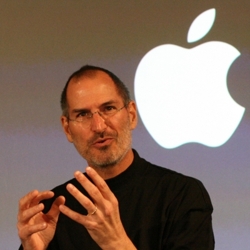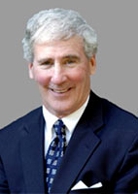
Editor’s note: When venture capitalists invest in early stage startups, more than anything else they are investing in the founders of the company and their ability to lead their employees through the most improbable set of circumstances to take an idea from a germ to a real and profitable business. In this guest post, Ben Horowitz of VC firm Andreessen Horowitz explains the leadership traits he and his co-founder Marc Andreessen look for before they invest in a startup. SOme of their investments include Skype, Zynga, Factual, and RockMelt. Before becoming investing partners, Horowitz and Andreessen co-founded Opsware, which they sold to HP for $1.6 billion, and prior to that Horowitz was an executive at Netscape.
At Andreessen Horowitz, we favor founders running the company. The reasons are many (and will be the topic of a future blog post). As a result, we spend a great deal of time thinking about the characteristics required to be a founding CEO. Perhaps the most important attribute required to be a successful founding CEO is leadership. So what is leadership and how do we think about it in the context of the CEO job? Are great leaders born or made?
Most people define leadership in the same way that Supreme Court Justice Potter Stewart famously defined pornography when he said: “I know it when I see it.”
A better definition comes from former Secretary of State Colin Powell who said: “You have achieved excellence as a leader when people will follow you anywhere if only out of curiosity.” For our purposes, we can generalize this to be the measure of the quality of a leader: the quantity, quality and diversity of people who want to follow her.
So what makes people want to follow a leader? We look for 3 key traits:
- The ability to articulate the vision
- The right kind of ambition
- The ability to achieve the vision
Let’s take these in order.
The ability to articulate the vision—The Steve Jobs Attribute
Can the leader articulate a vision that’s interesting, dynamic, and compelling? More importantly, can the leader do this when things fall apart? More specifically, when the company gets to a point when it does not make objective financial sense for any employee to continue working there, will the leader be able to articulate a vision that’s compelling enough that the people stay out of curiosity?
I believe that Jobs’ greatest achievement as a visionary leader so far was a) getting so many super talented people to continue following him at NeXT, long after the company lost its patina; then b) getting the employees of Apple to buy into his vision when the company was weeks away from bankruptcy. It’s difficult to imagine any other leader being so compelling that they could do these back-to-back and this is why we call this one the Steve Jobs attribute.
The right kind of ambition—The Bill Campbell Attribute

Andy Grove once remarked that a company needs highly ambitious executives in order to achieve its goals. However, it’s critical that those executives have “the right kind of ambition”: ambition for the success of the company rather than the “wrong kind of ambition”: ambition for the success of themselves.
One of the biggest misperceptions in our society is that a prerequisite for becoming a CEO is being selfish, ruthless, and callous. In fact, the opposite is true and the reason is obvious. The first thing that any successful CEO must do is get really great people to work for her. Smart people do not want to work for people who do not have their interests in mind and in heart.
Most of us have experienced this in our careers: a bright, ambitious, hard working executive that nobody good wants to work for and who, as a result, delivers performance far worse than one might imagine.
Truly great leaders create an environment where the employees feel that the CEO cares much more about the employees than she cares about herself. In this kind of environment, an amazing thing happens: a huge number of the employees believe that it’s their company and behave accordingly. As the company grows large, these employees become the quality control for the entire organization. They set the standard of work that all future employees must live up to. As in, “Hey, you need to do a better job on that datasheet—you are screwing up my company.”
I call this characteristic the Bill Campbell Attribute after my friend Bill who is the best that I’ve ever seen at this. If you talk to people who worked in any of the many organizations that Bill has run, they refer to those organizations as “my organization” or “my company.” A huge part of why he has been so unbelievably strong on this dimension of leadership is that he’s totally authentic. He would happily sacrifice his own economics, fame, glory, and rewards for his employees. When you talk to Bill, you get the feeling that he cares deeply about you and what you have to say, because he does. And all of that shows up in his actions and follow through.
Ability to achieve the vision—The Andy Grove Attribute

The final leg of our leadership stool is competence, pure and simple. If I buy into the vision and believe that the leader cares about me, do I think she can actually achieve the vision? Will I follow her into the jungle with no map forward or back and trust that she will get me out of there?
I like to refer to this as the Andy Grove attribute. Andy Grove will always be my model of CEO competence. He earned a Ph.D. in electrical engineering, wrote the best management book that I’ve ever read (High Output Management), and tirelessly refined his craft. Not only did he write exceptional books on management, he taught management classes at Intel throughout his tenure.
In his classic book, Only the Paranoid Survive, Grove details the story of leading Intel through the dramatic transition from the memory business to the microprocessor business. In doing so, he walked away from nearly all of his revenue. He humbly credits others in the company with coming to the strategic conclusion before he did, but the credit for swiftly and successfully leading the company through the transition goes to Dr. Grove. Changing your primary business as a 16 year old, large, public company raises a lot of questions. As Andy describes in an incident with one of his employees:
One of them attacked me aggressively, asking, “Does it mean that you can conceive of Intel without being in the memory business?” I swallowed hard and said, ‘yes, I guess I can.’ All hell broke loose.
Despite shocking many of his best employees with this radical strategy, ultimately the company trusted Andy. They trusted him to rebuild their company around an entirely new business. And that trust turned out to be very well placed.
So, are great leaders born or made?
Let’s look at this one attribute at a time:
- Articulation of the vision—There is no question that some people are much better story tellers than others. However, it is also true that anybody can greatly improve in this area through focus and hard work. All CEOs should work on the vision component of leadership.
- Alignment of interests—I am not sure if the Bill Campbell Attribute is impossible to learn, but I am pretty sure that it is impossible to teach. Of the three, this one most fits the bill “born not made.”
- Ability to achieve the vision—This attribute can absolutely be made; perhaps this is why Andy Grove’s tolerance for incompetence was legendarily low. Indeed, the enemy of competence is sometimes confidence. A CEO should never be so confident that she stops improving her skills.
In the end, some attributes of leadership can be improved more than others, but every CEO should work on all three.